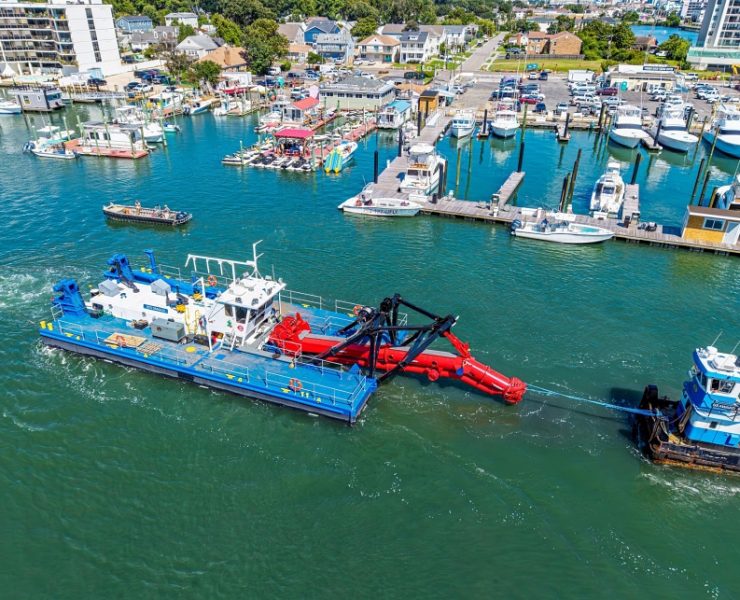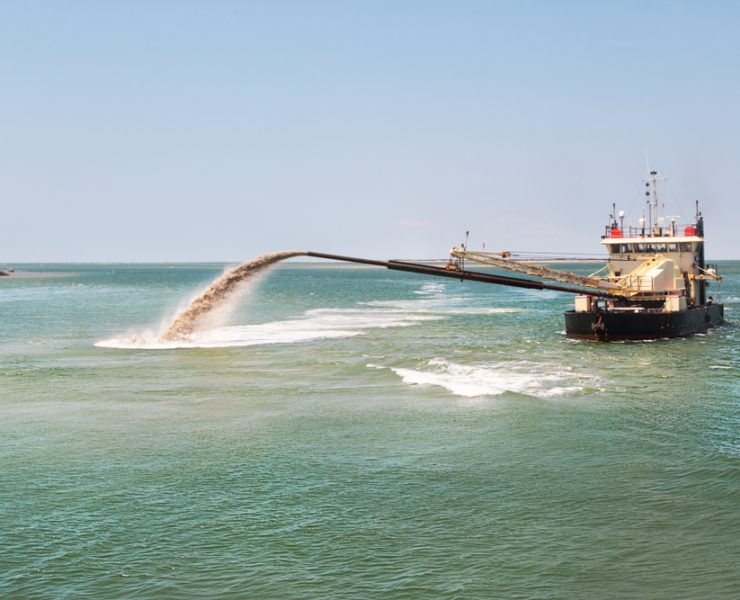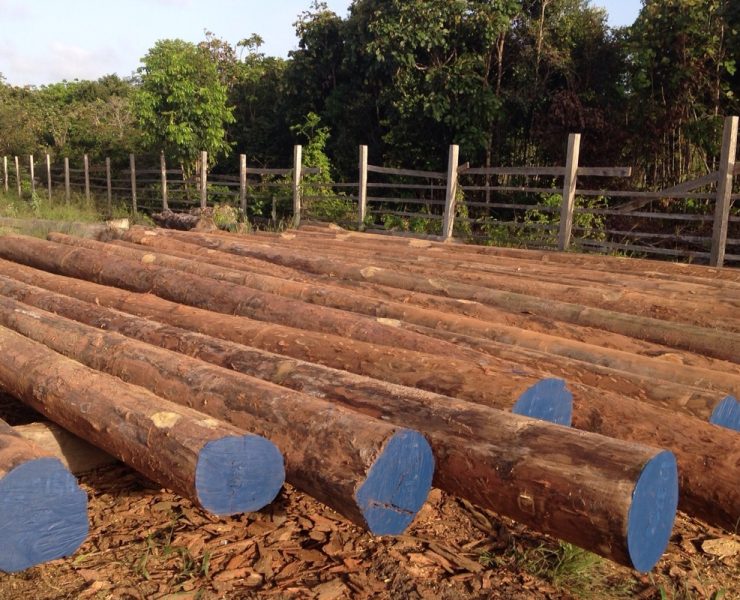Essential Considerations for Outsourcing Dredging Work
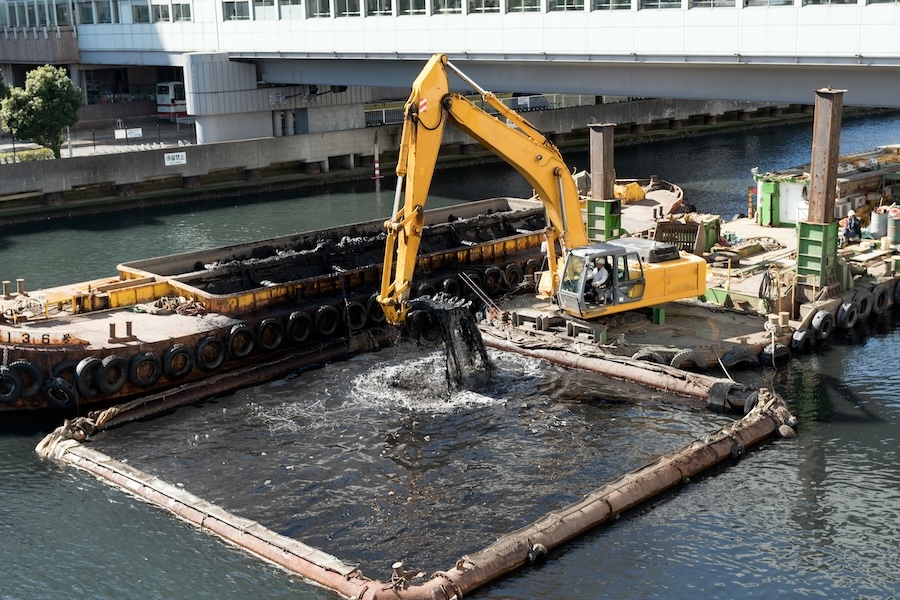

View the complete article here.
Marine construction projects frequently rely on dredging to establish solid foundations, ensure navigable waterways, or reclaim land. For marine contractors, deciding whether to handle dredging tasks in-house or hire a specialized contractor is crucial. This guide offers an in-depth look at the benefits of outsourcing dredging work, what to consider when selecting a contractor, and a detailed overview of dredging equipment and services.
Why Hire Dredging Contractors?
Most marine contractors have general equipment and expertise in construction. However, dredging requires specific skills and tools that make hiring specialized contractors advantageous in several scenarios…
Expertise and Efficiency
Specialized dredging contractors have extensive experience tackling complex challenges like varying soil conditions, deep excavation needs, or sediment disposal logistics. Their focused expertise allows them to complete projects faster and with fewer errors, which is critical for meeting tight project timelines.
Access to Specialized Equipment
Dredging requires costly and specialized machinery, such as hydraulic dredgers or trailing suction hopper dredgers, that may not be economically viable for general contractors to purchase or maintain. Contractors who focus solely on dredging often have a fleet of updated, well-maintained equipment tailored to different dredging needs.
Regulatory Expertise
Dredging operations are subject to strict environmental and navigational regulations. Contractors who specialize in dredging are typically adept at managing compliance, obtaining permits, and conducting environmental impact assessments. Their familiarity with these legal frameworks reduces risks of fines or project delays.
Cost Efficiency
While the upfront cost of hiring a dredging contractor might seem high, it often offsets long-term expenses. Specialized contractors can streamline operations, minimize risks, and complete projects efficiently—which saves time and resources.
What to Look for in a Dredging Contractor
While choosing a dredging contractor, the following should be considered…
Experience and Portfolio
A contractor’s portfolio can reveal their strengths, expertise, and adaptability. Look for projects similar in scope and complexity to your own. For example, if your project involves dredging near sensitive ecosystems, choose a contractor with a proven track record in environmental dredging.
Equipment Inventory
Ensure the contractor has access to suitable equipment for your project. For large-scale projects, trailing suction hopper dredgers or cutter suction dredgers might be necessary—whereas smaller jobs might only require hydraulic dredgers or clamshell dredgers.
Safety and Environmental Record
Request safety documentation, including their OSHA compliance history and environmental certifications. A contractor with a strong safety culture reduces the risk of accidents and ensures smooth project execution.
References and Reviews
Talk to past clients and review testimonials. A contractor with glowing references is more likely to deliver quality results.
Cost Transparency and Contract Terms
Make sure the contractor provides a detailed breakdown of costs. Understand terms related to project delays, equipment breakdowns, and additional fees for unforeseen circumstances.
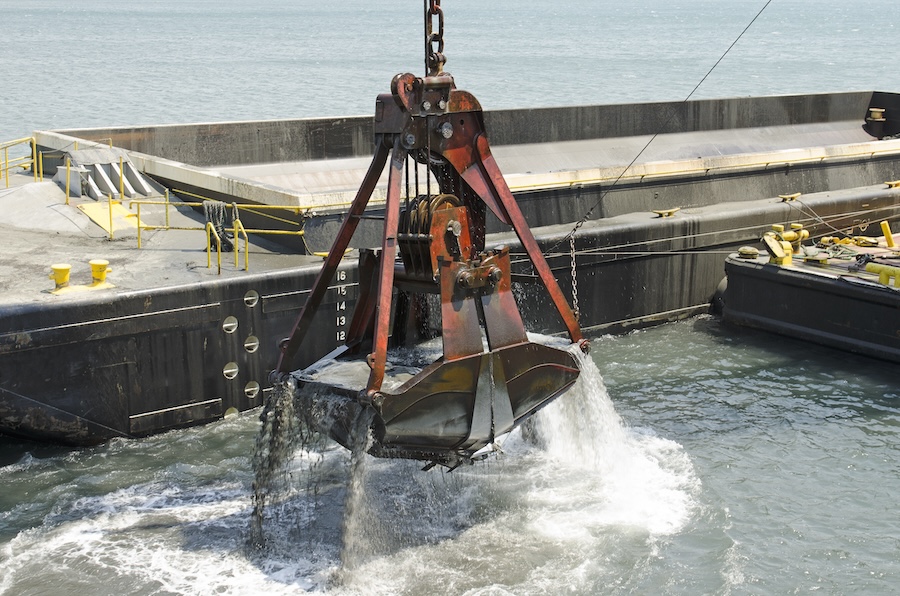
Types of Dredging Equipment
Understanding the equipment used in dredging can provide marine contractors with insights into what to expect and how to evaluate a contractor’s capabilities…
Cutter Suction Dredgers (CSDs)
Application: Ideal for excavating tough, compact materials like clay or rock.
Advantages: High precision and continuous material removal.
Limitations: Requires onshore or floating pipelines to transport dredged material.
Trailing Suction Hopper Dredgers (TSHDs)
Application: Best suited for large-scale maintenance or capital dredging projects.
Advantages: Self-contained material collection and transportation; minimizes environmental disturbance.
Limitations: High cost and limited to navigable waterways.
Clamshell Dredgers
Application: Excels in confined areas like docks or near piers.
Advantages: Precision and minimal disruption to surrounding infrastructure.
Limitations: Slower production rates compared to hydraulic dredgers.
Hydraulic Dredgers
Application: Used for environmental dredging and shallow water projects.
Advantages: Minimal turbidity; eco-friendly.
Limitations: Less effective for dense or compact materials.
Auger Dredgers
Application: Common in environmental dredging due to their ability to limit sediment dispersion.
Advantages: Effective in removing specific sediment layers with precision.
Types of Dredging Services and Applications
Marine contractors should familiarize themselves with the types of dredging services available to ensure they select the right one for their project needs…
Navigational Dredging
Focuses on maintaining or deepening waterways for vessel traffic. Essential for ports, harbors, and channels.
Environmental Dredging
Removes contaminated sediment with minimal environmental impact. Often involves precision techniques and eco-friendly practices.
Capital Dredging
Involves creating new waterways, harbors, or land reclamation projects. This type of dredging is critical for infrastructure development.
Maintenance Dredging
Ensures previously dredged waterways remain operational. This is a common, ongoing need for busy marine contractors.
Land Reclamation Dredging
Used to create new land areas by depositing dredged material. Popular in coastal development projects.
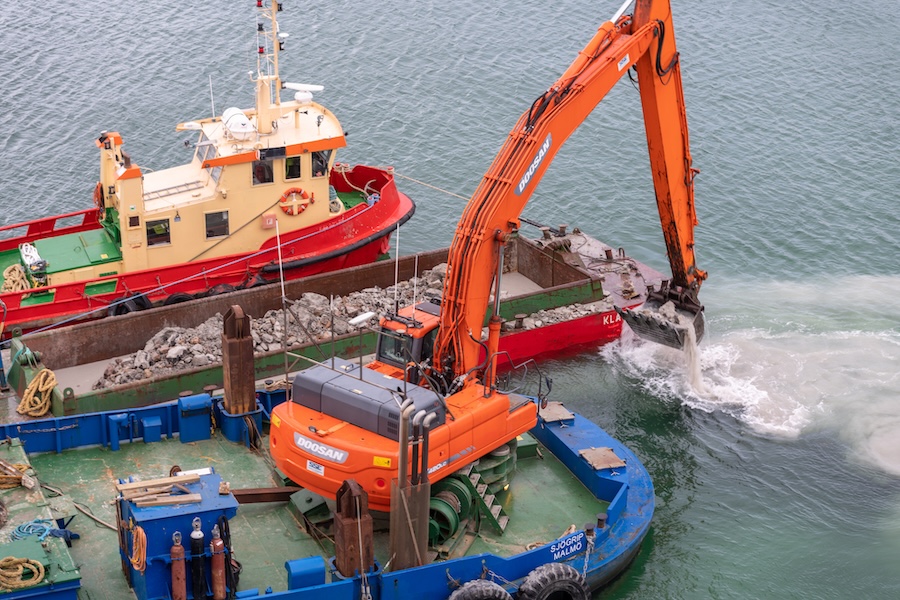
Key Considerations When Hiring Out Dredge Work
When hiring out dredge work, consider the following…
Project Scope and Requirements
Clearly define your project goals. Are you maintaining a waterway, building a foundation, or reclaiming land? Your goals will determine the type of contractor and equipment you need.
Budget Allocation
Allocate a realistic budget for dredging work, including potential cost overruns.
Timeline and Coordination
Ensure the dredging contractor can align their schedule with your overall project timeline.
Site Surveys and Preparation
Collaborate with the dredging contractor on site surveys, geotechnical reports, and environmental assessments before work begins.
View the complete article here.
Why should marine contractors hire specialized dredging contractors?
Specialized dredging contractors offer expertise, access to advanced equipment, and regulatory knowledge, ensuring efficient and compliant project execution.
What should marine contractors look for when selecting a dredging contractor?
Marine contractors should consider the contractor's experience, equipment, safety record, cost transparency, and references to ensure a successful partnership.














